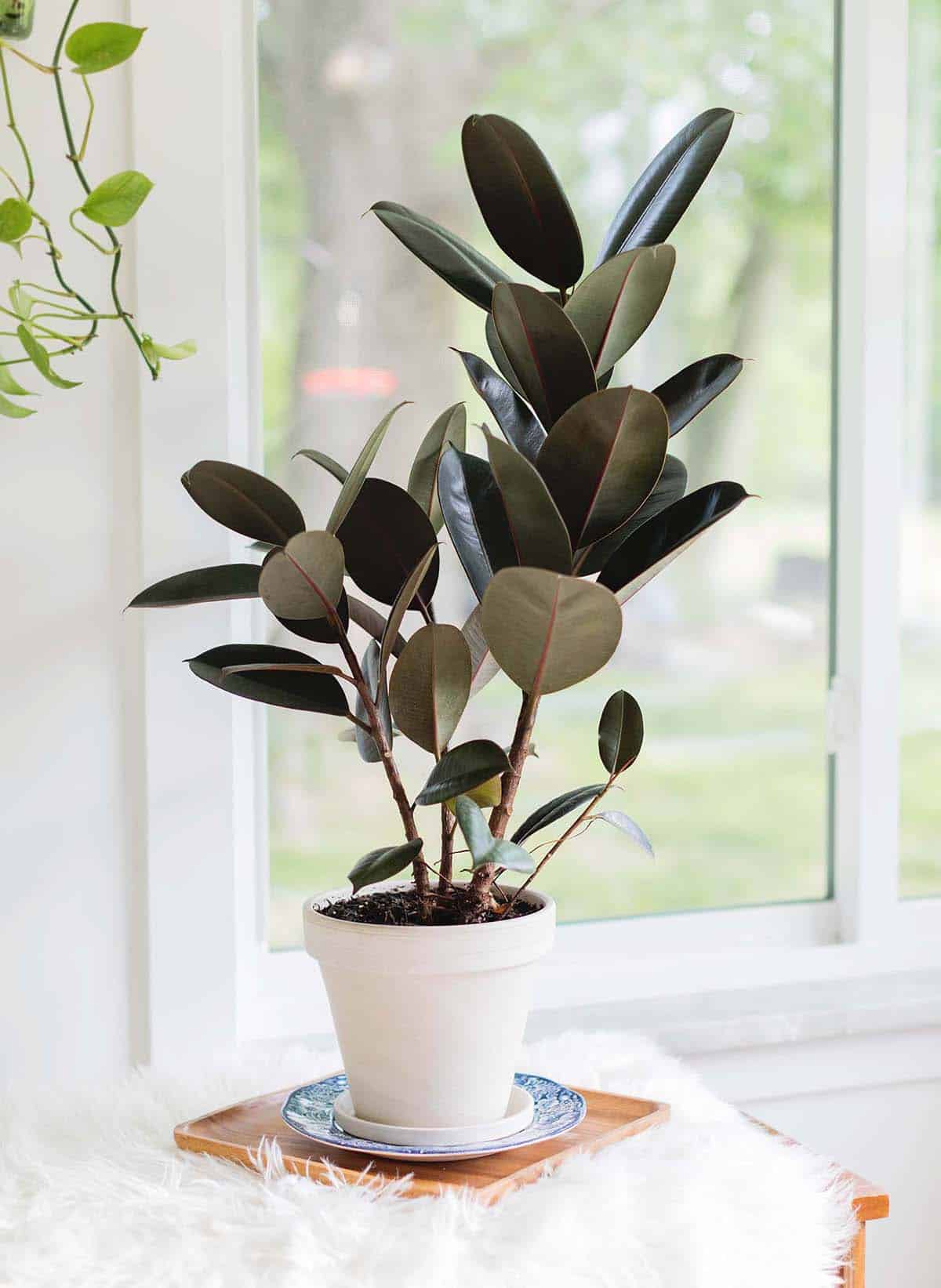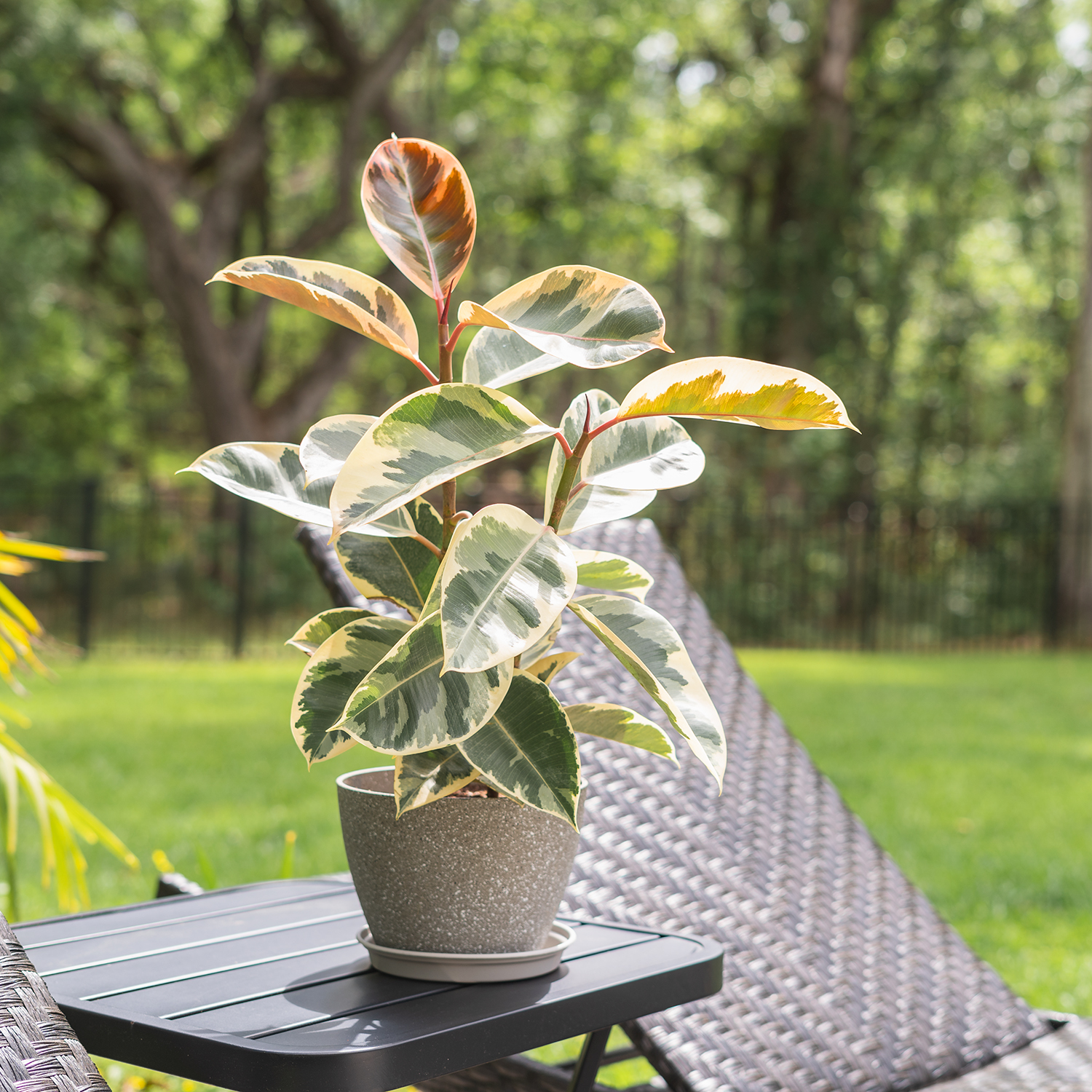The Rubber Tree Plant: A Comprehensive Guide
The Rubber Tree Plant (Ficus elastica), also known as the Indian Rubber Fig or Rubber Fig, is a popular houseplant renowned for its striking appearance and relatively easy care. Native to Northeast India and Southeast Asia, this plant has been cultivated for centuries for its milky sap, which was once used to produce natural rubber. Today, it’s primarily admired for its ornamental value, adding a touch of tropical elegance to homes and offices worldwide.
Appearance and Characteristics
The Rubber Tree Plant is characterized by its large, glossy, oval-shaped leaves that emerge in a vibrant reddish-bronze color before maturing to a deep, rich green. These leaves can grow up to 12 inches long and 8 inches wide, adding a dramatic presence to any space. The plant typically grows upright with a single trunk, but it can also be trained to have multiple stems.
Varieties
Several cultivars of the Rubber Tree Plant are available, each with unique characteristics:

Ficus elastica ‘Robusta’: This is the most common variety, featuring large, dark green leaves and a sturdy growth habit.
Caring for Your Rubber Tree Plant
The Rubber Tree Plant is relatively low-maintenance, making it an excellent choice for both novice and experienced plant enthusiasts. Here’s a guide to providing optimal care:
The Rubber Tree Plant thrives in bright, indirect light.

Water your Rubber Tree Plant thoroughly when the top inch of soil feels dry to the touch.
Use a well-draining potting mix.
The Rubber Tree Plant prefers warm temperatures between 65°F and 75°F (18°C and 24°C).
While not essential, higher humidity levels can benefit the Rubber Tree Plant.
Fertilize your Rubber Tree Plant during the growing season (spring and summer) with a balanced liquid fertilizer diluted to half strength.
Pruning can help control the size and shape of your Rubber Tree Plant.
Repot your Rubber Tree Plant every two to three years in the spring.
Common Problems
Yellowing Leaves: This can be caused by overwatering, underwatering, or nutrient deficiencies.
Propagation
The Rubber Tree Plant can be propagated through stem cuttings:
1. Take a 4-6 inch stem cutting with at least two leaves.
2. Remove the lower leaves and dip the cut end in rooting hormone.
3. Insert the cutting into a pot filled with moist potting mix.
4. Cover the pot with a plastic bag to create a humid environment.
5. Place the pot in a warm, bright location and keep the soil moist.
6. Rooting should occur within a few weeks. Once rooted, remove the plastic bag and continue to care for the new plant as usual.
Benefits of Having a Rubber Tree Plant
Air Purification: The Rubber Tree Plant is known to remove harmful toxins such as formaldehyde and benzene from the air, improving indoor air quality.
In Conclusion
The Rubber Tree Plant is a versatile and rewarding houseplant that offers numerous benefits. With its striking appearance, air-purifying qualities, and low-maintenance nature, it’s an excellent addition to any home or office. By following the care guidelines outlined in this article, you can ensure your Rubber Tree Plant thrives for years to come, bringing a touch of the tropics indoors.